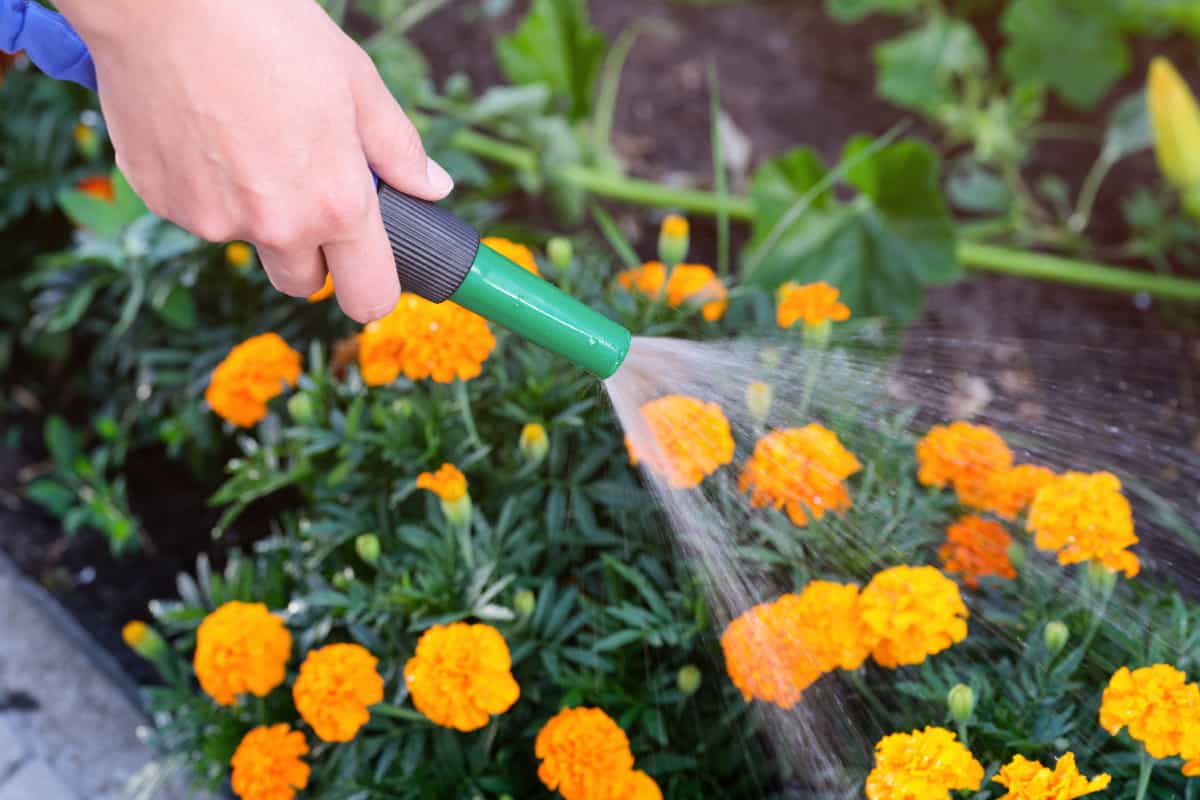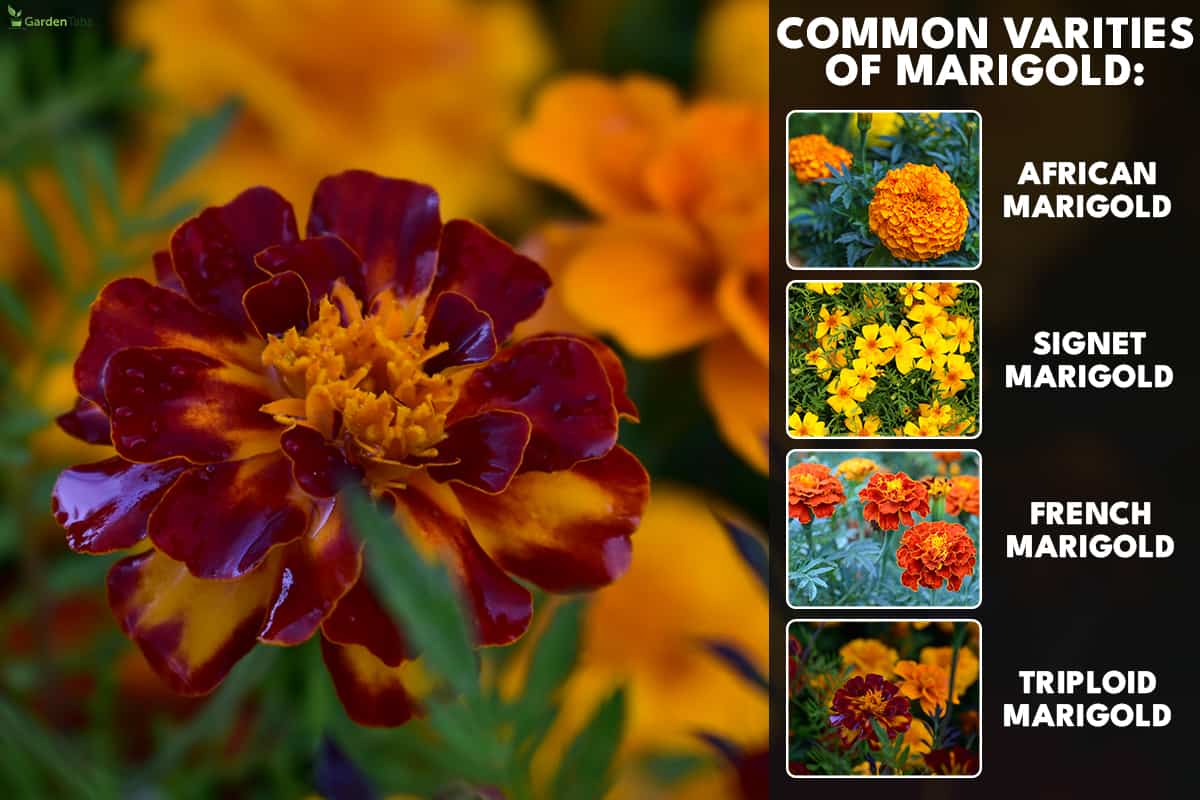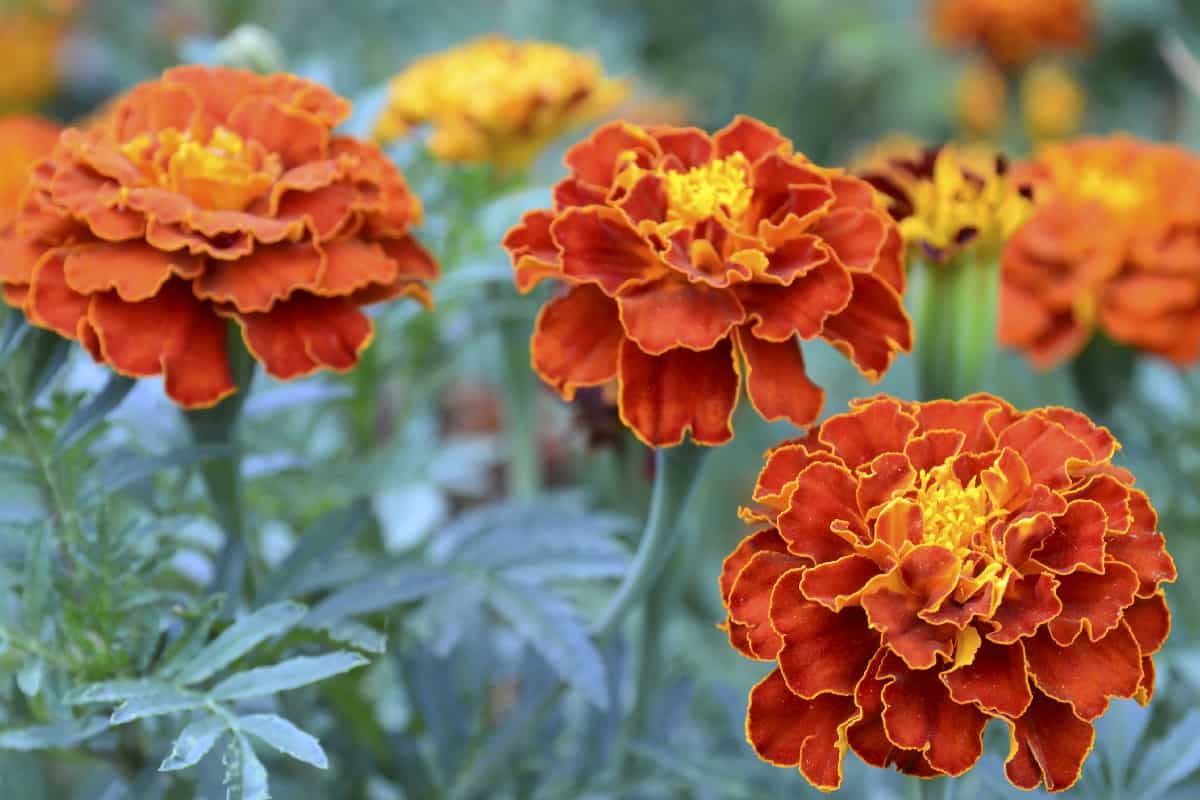You want to be sure that your marigolds are receiving the necessary care and if they can withstand droughts or if they need daily watering. Worry no more; we have gathered the answers for you.
African and Signet Marigolds can withstand droughts, but French Marigolds are much more resistant to damp weather.
Fully grown marigolds only require a thorough soaking once per week unless the temperature is particularly hot and dry. They might need watering twice per week for such high temperatures.
For hardy blooms like marigolds, naturally occurring rainfall is typically sufficient.
Marigolds are a gorgeous method of enhancing any raised bed and are a terrific flower for newbies. Learning the basics lets you get the best blooms out of your marigold flowers. Continue reading for a more thorough discussion of how to care for your marigolds properly.
Do Marigolds Need Daily Watering?
Marigolds are well-liked by newbie gardeners because of how simple they are to grow. They are drought-tolerant flowers that can endure arid temperatures.
![Orange marigold flowers and foliage, Are My Marigolds Perennial Or Annual? [Breakdown By Type]](https://gardentabs.com/wp-content/uploads/2022/10/Orange-marigold-flowers-and-foliage.jpg)
Even so, they still need a bit of additional consideration when it comes to watering. Make sure to water them once a week so that the roots don't suffer damage from excessive heat or dry spells. Over time, roots can safely grow and get stronger.
Without regular watering, the plants can experience stress and might even die. Depending on several factors, such as the pot size, the type of soil, the temperature, and the amount of sunshine exposure, marigolds may need to be watered more or less frequently.
If the plant gets frequent rains, it isn't required to water; however, marigold seeds should not be dried out.
It's crucial to give your freshly planted marigolds daily, frequent watering to get them started. When fully established, marigolds can spend one week without water. It is advised to water marigolds whenever the top inch of soil surrounding the plant is dried.
Tips For Watering Marigolds

You should help ensure that the ground is wholly soaked before watering once more in a spot where your flower seeds have been sown. Watering the area around the bases of every flower ought to be sufficient.
Installing a drip watering system, which would significantly lessen the work required, substantially increases the ease of caring for marigold plants.
When watering marigolds grown in containers or other pots, ensure that there is a significant quantity of extra wetness just at the bottom of the container. You must then let this moisture drain thoroughly before adding more.
Do not water your marigold plant right on top of it. This can cause water to sit inside the blossoms and leaves, leading to mildew and fungus development.
If the leaves on your marigolds start to yellow or even have brown patches, they require extra water. You will quickly become aware of indications of overwatering if your marigolds are receiving too much water.
Another symptom is mushy stems and leaves, especially at the plant's base. If you overwater marigold plants, the roots may also begin to rot, ultimately resulting in the plant's death.
Considerations Which May Affect The Timing Of Watering Marigolds
The frequency of watering a marigold depends on a variety of things. Distance, time of year, sunlight, and weather are all important considerations.
Distance
The distance was given great consideration if we talked about planting marigolds. The quantity and timing of watering may vary based on the distance between two marigold flowers. As a result of their competition for water, flowers that are grown closely together require more frequent watering than marigolds which are planted relatively far apart.
Time Of Year
Because the amount of moisture the plant requires solely depends on the season's environment, the time of year affects how frequently you need to water your marigolds.
Sunlight
Due to their preference for direct sunlight over slight shade, marigolds are known as "sun plants." By getting more sunlight, their growth will be enhanced.
This affects the amount and frequency of watering the plant. You should water them more frequently when they are in full bloom.
You might reduce how frequently you water them, though, if they are flowering in some shade. Keep such plants consistently well-watered to ensure that they can produce robust new branches of fresh blooms in the future.
Weather
The climate can greatly influence the amount or frequency of plant watering. You may not be required to water flowers in any way if there is a lot of rain. Watering following rainfall might result in rot disease.
Fungal issues may also occur if the ground is left unduly moist for an extended period after watering. Marigolds enjoy damp but not excessively wet ground situations.
When to Water Marigold Plants in Containers

Different watering schedules will be used for marigolds planted in pots. The plants' only available supply of hydration is the dirt inside the container, which severely restricts their options.
Therefore, monitor the soil rather than wait a week to water it. Depending on the size of its container and the outside temperature, your marigold may require a different amount of water.
During the warmer summer months, if your plant is outside or in a big container, you might need to water it daily. Make sure your container has enough drainage if you plan to plant marigolds in it.
Verify that the drainage hole is not clogged and that the soil mixture you are using has drainage holes. Both water deficit and overwatering can result in drooping leaves.
So, carefully examine the soil before determining whether to water your plant once more. Don't utilize fertilizer on dried roots. It can make the flower more vulnerable to chemical burns.
Remember to water the plants well the day before fertilization, despite applying a water-soluble fertilizer.
Check out this flower pot on Amazon.
Common Varities Of Marigold

Even the most amateur of gardeners can succeed in cultivating beautiful blooms because they make a great companion plant and offer a variety of advantages to the vegetable patch or garden. However, were you aware that there are approximately 50 different kinds of marigolds? The most typical ones are displayed below.
African Marigold

High, upright plants known as African Marigolds are prized for their huge, globular flowers. They are ideal for floral designs and cutting flower beds because of this.
Beautiful African Marigolds are available in many different types, some of which feature double yellow and orange blossoms and flowers in various shades of yellow, orange, white, and gold. These lovely flowers make wonderful bedding plants because they thrive in warmer climates.
On stalks as tall as 4 feet, the gigantic blossoms, which may reach a width of up to 5 inches, can be observed. African Marigolds, the tallest of the various species of Marigold plants, are ideal for staking near the back of a flower garden.
Signet Marigold
In addition to being beautiful, Signet Marigold plants are also tasty. The blooms can be used to sweeten or embellish a variety of foods, including salads.
The daisy-like blossoms have a flavor reminiscent of peppery tarragon. The Signets are a suitable addition to the herb garden as a result.
They are a popular option for window boxes, pots, borders, and mixed flower beds. They thrive in hot, dry environments.
Regularly removing wasted blooms from marigolds of all varieties promotes the emergence of new flowers. The Signet Marigold plants in the Gem line are charming.
Lemon Gem is well known for its vivid yellow flowers, while Tangerine Gem also has lovely orange blooms. The same family of Marigolds also includes Red Gem plants, which are well-known for their showy red blossoms.
French Marigold

The French variety is one of the bushier, more compact varieties of marigold. French marigolds are well-known for their graceful flowers that look wonderful in bulk plantings and are frequently broader than tall.
One of the strongest varieties of Marigolds, they are great for flower beds, window boxes, and containers. The French Marigold's perennial blossoms are frequently utilized in perfumes and recipes.
These flowers can be grown indoors and bloom from late spring through fall. The ideal temperature range for the plants is average between 70 and 75 °F.
The French Marigold is simple to raise from seed, just like other varieties of Marigolds. Low-maintenance flowers often do better in wetter climates than different sorts.
Triploid Marigold
French and African Marigold varieties are crossed to create triploid hybrids. Huge, vibrant, and colorful blossoms are the main breeding characteristic of these lovely flowers.
Even under the most challenging growing conditions, these hardy flowers maintain their vitality, and their stems are still robust and long-lasting. It is simple to understand why they are such a well-liked bedding plant because they continue to bloom long after it has gotten too warm for other forms of Marigolds.
Triploid hybrids have a famously poor germination rate, making them more challenging to raise from seeds than some other forms of marigolds. The beautiful blooms on the marigolds of the Zenith variety can measure up to 3 inches in width.
Sturdy 14-inch stalks support these striking blooms. Zeniths bloom in various tones of yellow, red, and orange.
View this Marigold seed mix on Amazon.
Conclusion
Every plant needs frequent watering to grow. Because it can affect your plants' growth, color, and general health, keeping them hydrated is essential. If you want them to live and grow quickly, you have to make sure they constantly have access to plenty of water in their systems.
Here are related topics that you may want to read:


